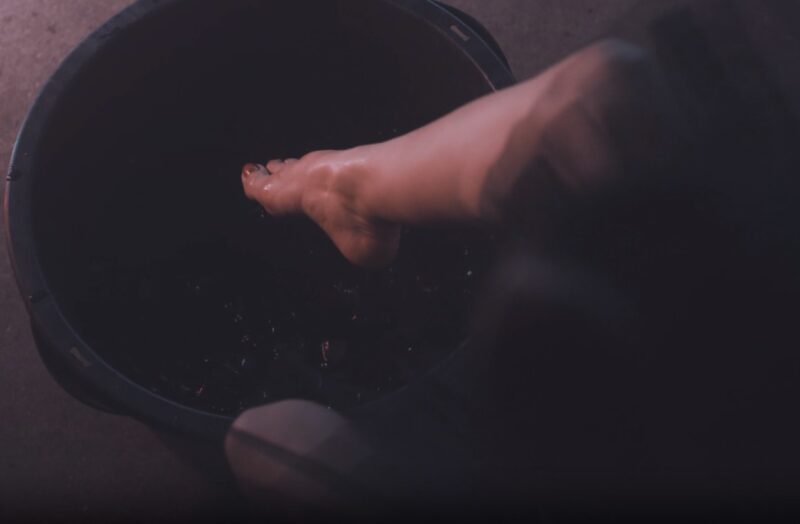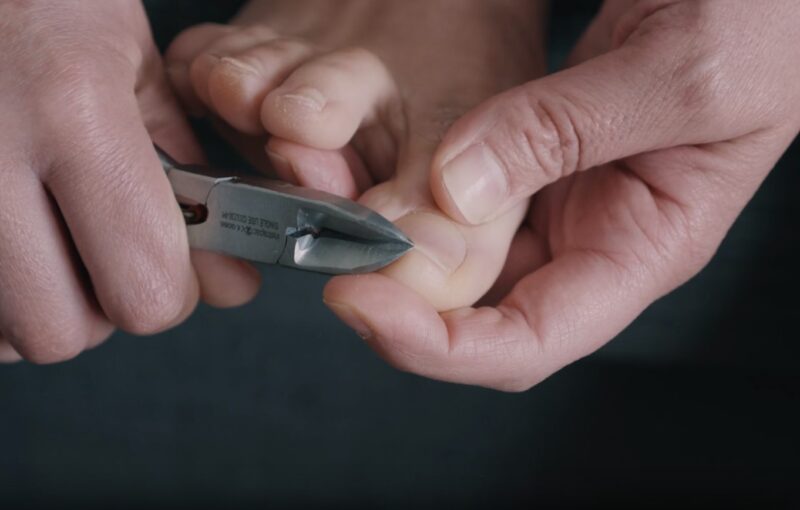Infected toenails need to be treated immediately before it is too late.
We often forget that our toenails, just like any other organ, are living and growing elements in our bodies. Our toenails are the result of the hardening of top layers in the epidermis, and like the other layers of skin, toenails can be subject to infection. Infections can be brought forth in a number of ways, through viruses, bacteria, and fungi developing in the nail that can produce serious symptoms of swelling, irritation, and pain.
Some general causes of an infected toe can include:
- Cutting toenails too short
- Constantly picking or tearing nails
- Frequent pressure placed upon toes
- Walking barefoot in damp public areas
- Wearing tight shoes or socks
It’s important to immediately take action or seek help if you are dealing with an infected toenail, because avoiding being proactive will only worsen the nail’s condition. Here are some tips on how to properly adhere to treating a toenail infection:
Soak the Toe

This is a general form of treatment that is suitable for first noticing an infection, especially with an ingrown toenail. For best results, fill up your bathtub with very warm water. Mix in a few tablespoons of Epsom salt, and keep your foot submerged in the water for at least a good 10 to 15 minutes. You can repeat this method of treatment multiple times throughout the day, so the infected nail can properly heal.
Prop the Nail
This is a good technique to use if you are dealing with an ingrown toenail. You can relieve pressure from the infected area by slightly propping the nail up with a small piece of cotton or floss behind the edge of the nail, but make sure to avoid using a metal tool or utensil to push the cotton further behind the nail. This can help provide the infected toenail with moisture that is trapped under its base.
Applying Ointment

Infections often lead to toenails drying out and not receiving enough proper nourishment to keep them healthy. Applying ointment to an infected area on the toe can help provide relief as well as prevent the infection from spreading. Using topical antibiotic ointments to rub on the nail should work just fine, or wrapping the infected toe with a bandage covered in any over-the-counter ointment will help keep the lotion effectively in place.
Keep the Toe Dry and Clean
After soaking or cleaning the toe, it’s important to keep it dry and clean. Moisture can promote the growth of fungi and bacteria, worsening the infection. After washing or soaking the toe, gently pat it dry with a clean towel. Avoid walking barefoot, especially in damp areas, and change your socks regularly to ensure your feet stay dry.
Wear Proper Footwear

Choose comfortable shoes and provide enough room for your toes. Tight shoes can exacerbate an ingrown toenail or an infection by increasing pressure on the affected area. Ideally, wear open-toed shoes or sandals if the weather permits, to allow the toe to breathe and reduce moisture buildup.
Use Antifungal Powders or Sprays
For toenail infections caused by fungi, over-the-counter antifungal powders or sprays can be beneficial. These products help to reduce fungal growth and keep the area dry. Apply them as directed on the packaging, typically once or twice daily, to the affected toe and the insides of your shoes.
Visit a Doctor

Like all types of wound care, visiting a doctor before the infection gets out of control is the best way to treat a toenail infection. Seeing a clinician can help you understand how the infection came to fruition, and how to effectively prevent it from happening again. For severe cases, the clinician will prescribe antibiotics as a last resort to combat the infection. It is always better safe than sorry when it comes to these conditions.
What Not to Do
While seeing a podiatrist is ultimately the best way to treat an infected toe, it’s crucial to remember that “playing doctor” should best be left to the professionals. There are a variety of ways to worsen the condition of the toe, including:
- Cutting the nail
- Draining an infection
- Rubbing coal on the toe
- Digging under the nail
Try to avoid any urge to use any of these amateur techniques to help treatment.
FAQ
Can diet affect toenail infections?
Yes, a healthy diet can support your immune system, possibly preventing infections. Foods rich in vitamins and minerals can promote nail health. However, diet alone isn’t a cure for toenail infections.
Are there any natural remedies for toenail infections?
Some natural remedies, like tea tree oil, have antifungal properties. However, their effectiveness varies, and they should not replace medical treatment, especially for severe infections.
How can I prevent toenail infections in the future?
Maintain good foot hygiene, wear breathable footwear, keep your feet dry, and avoid walking barefoot in public places. Regularly trim your nails straight across, not too short.
Can toenail infections spread to other parts of the body?
In rare cases and if left untreated, the infection could spread. It’s more likely in individuals with weakened immune systems.
Are toenail infections contagious?
Yes, they can be. Avoid sharing footwear or nail clippers, and maintain good foot hygiene to prevent the spreading of the infection.
Final Words
Toenail infections, while common, require prompt and proper care. Follow these guidelines, maintain good hygiene, and consult a doctor if needed to ensure your toenails stay healthy.







